Русский изразец - [5]
The zenith of the development of Russian tiles came with the appearance of coloured enamels in the second half of the seventeenth century. In 1654 Patriarch Nikon, an erudite and educated person, founded a tile workshop in the Valdai Svyatozersky Monastery. Its foreign craftsmen, fugitives "from Polish soil" Stepan Ivanov - son of Polubes, Samoshka Grigoriev and Ignat Maksimov introduced forms and themes characteristic of West European art. This ushered in a new era in Russian tile-making. The workshop began to make tiles using "fryazhsky" (foreign) patterns. Tiles were coated with enamels or green glaze. Four years later the best craftsmen were sent to the town of Istra to decorate the newly-built New Jerusalem Monastery. Pyotr Ivanovitch Zaborsky, "a skilled craftsman of gold, silver, copper and 'tseninna' (tile enamelling), and other intricate arts" was invited from Lithuania. The workshop now specialized in making whole architectural details, such as parts of cornices, columns, portals, iconostases, platbands. This was one of the principal achievements of the Istra craftsmen. In 1666, when Nikon was condemned and exiled, the craftsmen from Istra were transferred to the Kremlin Armoury. From that time Moscow became the centre of tile production. Craftsmen of the Potters' Quarter started making tiles of the "fryazhsky" type, gradually introducing their traditional patterns of alconosts (or "sirens"), eagles, lions, etc. Soon the tiles made by the Kremlin Armoury craftsmen and those of local potters became almost indistinguishable. At the same time tile production began to develop in outlying towns such as Yaroslavl, Vologda, Kostroma, districts in the North and other places, each with its own characteristic style.
These tiles were used in palaces and public buildings, churches, and houses of the nobles as separate insets, cornices, platbands, order forms. To make the ornament more vivid the images became larger and were done in high relief, sometimes covering more than one tile. Green and blue glaze provided the background. For higher relief, protruding parts were covered with white, yellow and translucent enamel, the latter producing a brownish-red colour, owing to the red slab showing through. In the light of the sun such tiles produced an impression of precious stones against the dull brick walls. Using certain sets of tiles, craftsmen produced different compositions of floral and geometrical ornaments, depicting birds among tree branches; tendrils and plants; tulips, pinks and lilies in vases; pineapples, pears and apples. The Zemsky (district council) Department, built in the 1690's in Red Square in Moscow (replaced in 1875 by the present State History Museum) was richly decorated. Its facade was faced with tile friezes, columns, platbands, cornices, ceramic insets with the double-headed eagle.
A four-tile composition from the Church of Kozma and Demian in Sadovniki (1687) includes images of various fruits and a bird, looking as if set on white towels.
The tile facing in the Church of St. Stephan (1686) beyond the Yauza River is notable for its diversity of images and purity of colours. The tile frieze bears ornaments of spirally twirled leaves. Brick pier insets present a luxurious flower with fruits in a yellow pitcher. This is a nine-tile composition of refined design.
The life-size figure of the Apostle Luke holding the Gospel is unusual and unique in its complexity. This bas-relief once adorned the cathedral porch of the Danilov Monastery in
Moscow. Similar figures have been preserved in the drum of the Moscow Church of the Assumption in Gonchary. Buildings profusely adorned with variegated tiles stood out from among low wooden houses, accentuating their state and public significance.
The interiors of tsarist palaces, boyars' homes, and state buildings acquired tiled heating stoves that came to be known under the names "obrazchatyie" (tile-clad), "muravlenyie" (green-glazed), "tseninnyie" (enamelled). These round or rectangular (oval or quadrangular) stoves were large and their intricate architectural design was an integral part of the interior decor. Very few tiles of these splendid stoves have come down to us. During repairs they were ruthlessly destroyed, old tiles being replaced by more fashionable new ones.
In the early eighteenth century new tendencies in architecture made external tile decor unnecessary. In interiors, however, tiles were still widely used throughout the eighteenth century, mainly for stove facing.
Owing to the use of tiles exclusively in interiors, high relief ornaments were no longer necessary. The transition to flat tiles was a gradual process. At first, these were painted relief tiles with an oval in the centre enclosing a small lily flower or a theme with an inscription. In course of time the oval gave way to thematic or landscape painting.
The traditional Russian tile was greatly influenced by Delft blue ceramic plaques produced in Holland for interior wall facing. They impressed Peter the Great during his foreign travels in the late seventeenth century and he decided to set up their production in Russia. At his order "two Swedish prisoners of war - Yan Flegner and Kristan" were sent to the New Jerusalem Monastery. They were to begin the production of flat painted tiles "with blue plants after the Dutch fashion". The fate of the tiles made by the Swedes is unknown, but flat white tiles with blue pattern of this kind adorned Russian stoves throughout the eighteenth century.
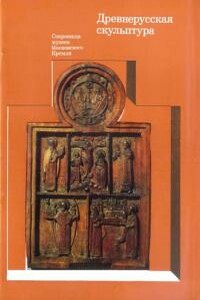
В книге рассказывается история главного героя, который сталкивается с различными проблемами и препятствиями на протяжении всего своего путешествия. По пути он встречает множество второстепенных персонажей, которые играют важные роли в истории. Благодаря опыту главного героя книга исследует такие темы, как любовь, потеря, надежда и стойкость. По мере того, как главный герой преодолевает свои трудности, он усваивает ценные уроки жизни и растет как личность.

Данный выпуск является вторым в серии иллюстрированных каталогов памятников архитектуры Подмосковья. Даются описания всех охраняемых государством, а также предлагаемых к постановке на государственную охрану архитектурных сооружений Московской области. Краткая характеристика каждого памятника с указанием даты сооружения, авторства (если оно известно), архитектурно-художественных особенностей сопровождаются фотографией его общего вида и планом. Для архитекторов и искусствоведов, а также для всех, интересующихся отечественной культурой. Вып 2, часть 3 Зарайский район Город Звенигород Город Ивантеевка Истринский район.
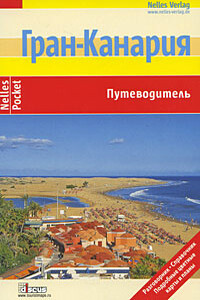
Если вы мечтаете хоть ненадолго уехать от цивилизации на теплый благодатный остров, где нас нет, а есть море и первозданная щедрая природа, – вам сюда. Гран-Канария – это вулканические горы, влажные леса в ущельях, красочный подводный мир и немалый выбор отпускных развлечений. И увлекательная история островов, которые открывали, теряли и вновь открывали несколько раз. Вот где можно почувствовать себя первооткрывателем!Исторический обзор приводит важнейшие события из истории Канарских островов. Все главные достопримечательности Гран-Канарии перечислены в одном кратком списке с комментариями.
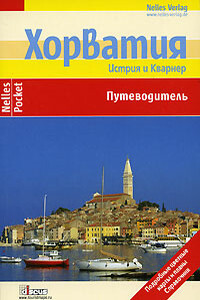
Дискус Медиа представляет карманный путеводитель по самой красивой стране Европы в серии Nelles Pockets немецкого издательства Nelles Verlag.На 96 страницах книги подробно описываются история и достопримечательности Хорватии, приводится обновленная информация о работе музеев, ресторанов и других учреждений туристической индустрии. Отдельные главы посвящены культурной жизни страны, развлечениям, особенностям шоппинга и прочим особенностям жизни и времяпровождения в Хорватии. Книга рассчитана как на организованных туристов в составе групп, так и в особенности на тех, кто предпочитает знакомиться с новыми странами самостоятельно.
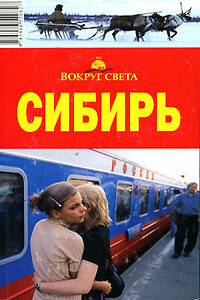
В книге рассказывается история главного героя, который сталкивается с различными проблемами и препятствиями на протяжении всего своего путешествия. По пути он встречает множество второстепенных персонажей, которые играют важные роли в истории. Благодаря опыту главного героя книга исследует такие темы, как любовь, потеря, надежда и стойкость. По мере того, как главный герой преодолевает свои трудности, он усваивает ценные уроки жизни и растет как личность.
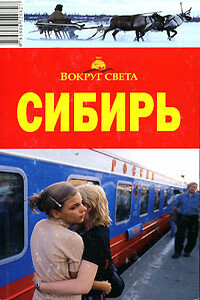
В книге рассказывается история главного героя, который сталкивается с различными проблемами и препятствиями на протяжении всего своего путешествия. По пути он встречает множество второстепенных персонажей, которые играют важные роли в истории. Благодаря опыту главного героя книга исследует такие темы, как любовь, потеря, надежда и стойкость. По мере того, как главный герой преодолевает свои трудности, он усваивает ценные уроки жизни и растет как личность.